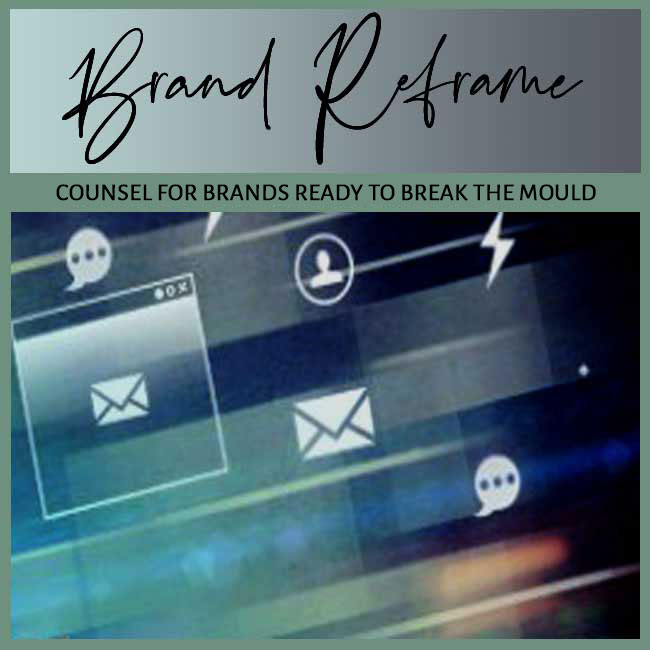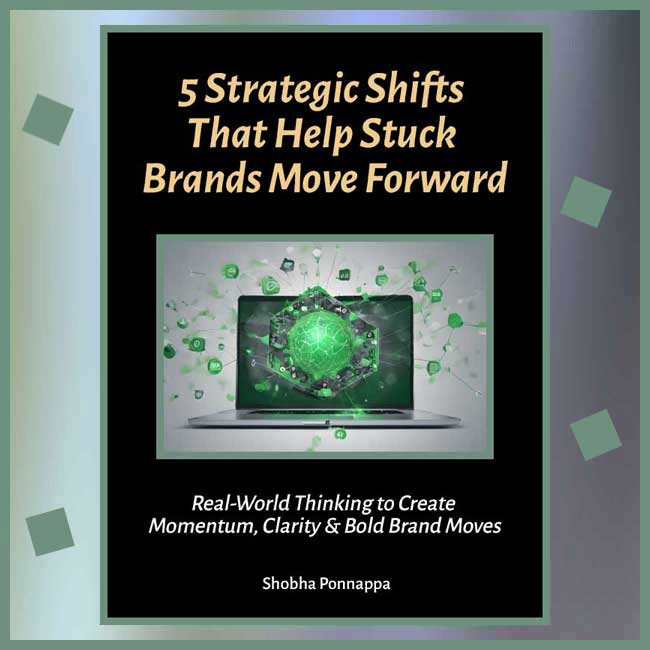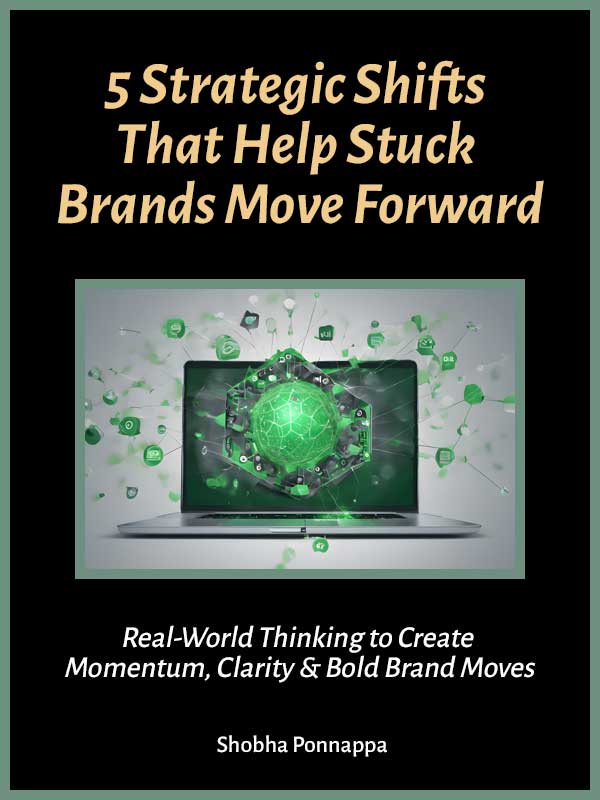
FOCUS: BRAND LAUNCH FAILURE | AUDIENCE: INVESTORS IN SLUGGISH BRANDS
I helped a wellness beverage shift its relevance as a boundary-setting ritual—not just a calming concoction.
The founders had pedigree. They’d exited a successful food-tech venture and re-entered the market with a ready-to-drink calming beverage infused with ashwagandha, tulsi, and other Ayurvedic adaptogens. It was sleekly packaged, D2C-focused, and timed perfectly with the mental health and wellness boom. But while first-month traction came from founder PR and curiosity clicks, the second month brought silence. Repeat orders stagnated. Influencer shoutouts fizzled. The brand wasn’t gaining velocity—and no one could understand why.
Their mistake? They never truly validated the product-market fit. They assumed stress was a problem consumers wanted to drink away. But stress, in India especially, is managed in diverse ways—community, prayer, scrolling, tea breaks. The founders were solving a genuine issue, but with a format that lacked cultural stickiness or habitual grounding. The drink had no context in the user’s day. It wasn’t rejected—it was forgotten.
I didn’t start with the product; I started with behaviour. What I saw was that the audience did want calm. But they didn’t want to feel “treated.” They wanted a choice that felt empowering, not medicinal. In Indian culture, a drink with bitter undertones—no matter how natural—is only embraced when it fits into a known moment. This product hadn’t claimed any moment.
The real issue wasn’t lack of need—it was lack of ritual. Without a defined role in the user’s daily rhythm, the drink floated untethered. Calm, in this case, wasn’t enough. People didn’t need an elixir. They needed a cue—something that helped them consciously switch from stress to stillness. When I reframed the problem that way, everything unlocked.
My breakthrough idea was to stop selling the drink as a solution to stress, and start positioning it as a boundary ritual—a behavioural prompt that marked the end of noise. I renamed the signature variant “Off Mode”, turning it into a symbolic, emotional signal: “I’m done for the day.” Not a chill-out drink. A shutdown cue.
The new brand line became: “Not just calm. Closure.” This tiny pivot—from relief to ritual—gave the product cultural gravity. It now had a time, a place, and a purpose. It was no longer asking consumers to try something new; it was helping them do something familiar—just better.
I guided the brand to create anchoring moments around end-of-day decompression, aligning everything—from packaging to partnerships—around the theme of digital detox, after-work wind-downs, and reclaiming stillness.
We dropped influencer campaigns aimed at wellness hacks, and instead collaborated with creators who shared “end-of-day” routines. We designed social assets around mood shifts, not ingredients. The drink became the signal, not the star. This repositioning didn’t change the product—but it transformed its role.
Here are 10 strategic ideas developed (and several executed) to support the new brand direction:
“Off Mode” Packaging Redesign – A clean, matte-finish label with minimal text and a subtle power-down symbol became a visual trigger for the ritual.
#ShutDownSip Campaign – A UGC-led social challenge where users shared the exact moment they drank the beverage to end their workday.
Wind-Down Routine Reels – Collaborated with productivity influencers to share calming evening routines featuring the product as the closing cue.
Spotify Playlist Tie-In – A 15-minute “Off Mode” music track launched with the drink, reinforcing the ritual with ambient audio.
Email Series: “Your Evenings, Reclaimed” – Bite-sized behavioural nudges on how to end the day intentionally—with the drink as part of the flow.
Popup Shop at Co-Working Cafes – Branded as “The Last Desk Drop,” offering free samples post-6pm with signs reading “You’ve done enough today.”
Glassware Collab – Limited-edition tumblers with gentle prompts like “No more tabs,” bundled with drink subscriptions.
End-of-Day Alarm Integration – Android shortcut users could receive a branded prompt with their 8pm reminder: “Time to go Off Mode.”
Partnered Content with Therapists – Short videos exploring why transition rituals help lower cortisol, lending scientific legitimacy to the ritual.
Visual Storytelling Ads – Instead of showing ingredients, videos showed urban stress, fading into candlelight and quiet, with the drink as the moment of shift.
41% increase in repeat purchases from existing customers.
Social engagement up 4x with ritual-focused storytelling vs ingredient-led posts.
Subscription signups grew by 27%—most between 6–9pm slots.
Featured by a top productivity podcast as a “daily off switch” worth adopting.
CONFIDENTIALITY CAVEAT: This case study represents a confidential engagement. For privacy, specific brand identifiers, campaign names, and project phases have been withheld. It has been shared with permission while preserving client discretion.
If you’re brand owner or manager seeking stronger brand performance, here’s a case study that could interest you: “How a Pharma Brand Rewrote Its Prescription—From Cure to Care.“
And if you’re a solo expert looking to sharpen traction, this case study I worked on may resonate: “How a 5-Rupee Street Food Critic Became a Food Folklore Star.“

"One BIG IDEA can turn brand stagnation into unstoppable movement. Spots are limited each week—book your breakthrough session now."
Shobha Ponnappa
I Bring You:
Smart insights, real-world frameworks, and idea-driven clarity – designed to help brands move.
Get my fortnightly Brand Reframe newsletter. Smart insights, distilled thinking, and focused momentum to help your brand lead.

Get my free case studies guide. Practical ideas, bold shifts, and clever transformations to propel your brand forward.

Just fill in the form to join. Get my newsletter and the guide shown alongside, all with several game-changing tips.
KEY TOPIC CATEGORIES COVERED ON THIS SITE:
BRAND ENGAGEMENT GAPS
BRAND STRATEGY MISFIRES
BRAND DIFFERENTIATION ISSUES
BRAND TIMING MISTAKES
BRAND ALIGNMENT CHALLENGES
BRAND POSITIONING GAPS
BRAND CONTENT INCONSISTENCY
BRAND LEGACY UNDERUSE
BRAND AUDIENCE DISCONNECT
BRAND DIGITAL STAGNATION
BRAND MESSAGING MISFITS
BRAND LEADERSHIP GAPS
BRAND PURPOSE CONFUSION
BRAND METRICS MISREADING
BRAND VISUAL IRRELEVANCE
BRAND POSITIONING OVERLOAD
BRAND FUNNEL FAILURES
BRAND IMITATION PITFALLS
BRAND SCALING RISKS
BRAND FOUNDER MISFIT
BRAND INVESTMENT DRAINING
BRAND VALUATION GAPS
BRAND EXIT BARRIERS
BRAND MESSAGING MISALIGNMENT
BRAND BLINDSPOT WARNINGS
BRAND PORTFOLIO WEAKNESSES
BRAND OVERSIGHT GAPS
BRAND MARKET SHIFTS
BRAND TIMING ERRORS
BRAND FOUNDER DEPENDENCY
BRAND NARRATIVE GAPS
BRAND POSITIONING WEANESSES
BRAND DILIGENCE ISSUES
BRAND MOMENTUM PARALYSIS
BRAND PRODUCT MISALIGNMENT
BRAND SCALING BLOCKS
BRAND STORY WEAKNESSES
BRAND CLARITY ISSUES
BRAND CONTENT DIFFERENTIATION
BRAND OFFER EVOLUTION
BRAND THOUGHT LEADERSHIP
BRAND PLATFORM PROBLEMS
BRAND REPUTATION SETBACKS
BRAND SUPPORT DEFICIENCY
BRAND VISION CONFUSION
BRAND IDENTITY CRISIS
BRAND OFFER DILUTION
BRAND AUDIENCE MISMATCH
BRAND ECOSYSTEM INEFFICIENCY
BRAND CONTENT CHAOS
BRAND DIY LIMITATIONS
BRAND JOURNEY BREAKS
BRAND BACKSTORY ISSUES
BRAND PRACTICE STRESSES
COPYRIGHT © 2025. SHOBHAPONNAPPA.COM. ALL RIGHTS RESERVED.

Just fill in this form and get this awesome guide via email. Plus … each fortnight you’ll receive my Brand Reframe Newsletter that brings you smart insights, distilled thinking, and focused brand momentum.